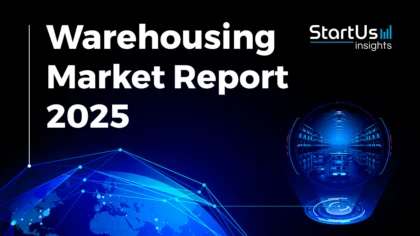Our Innovation Analysts recently looked into emerging technologies and up-and-coming startups working on solutions for the logistics sector. As there are a lot of startups working on various different applications, we want to share our insights with you. Here, we take a look at 3 promising recognition technology solutions.
Heat Map: 3 Top Recognition Technology Solutions
For our 3 top picks, we used a data-driven startup scouting approach to identify the most relevant solutions globally. The Global Startup Heat Map below highlights 3 interesting examples out of 229 relevant solutions. Depending on your specific needs, your top picks might look entirely different.
Simple.RFiD – Radio-Frequency Identification (RFID)
As warehouses become increasingly larger and house a greater diversity of stock-keeping units (SKUs) than ever, the scope for mistakes at every step increases. The false identification of a product or misplacing it in the warehouse often lead to costly recalls. RFID tags on packages can mitigate these costs. Unlike barcodes that need to be checked one at a time by a worker, RFID scanners can scan, sort, and count many RFID tags at once.
Simple.RFID, a company based in Utah, USA, provides RFID-based solutions for inventory management. The company produces every component of such a solution, namely RFID tags, RFID readers, and cloud-based software that connects them. They can rapidly deploy RFID printers and readers for businesses of any size and can even integrate the data flow with the in-house software ecosystem of their clients.
DroneScan – Image Recognition
A package can have multiple storage locations in a warehouse from its manufacturing date until it reaches the customer. As packages keep moving across locations, tracking their counts becomes a huge challenge. This causes low worker efficiency and puts them at great risk when inspecting higher shelves. With advancements in image recognition algorithms, remotely operated cameras can be used to automatically scan large areas.
DroneScan, a South African startup, uses drones fitted with cameras to scan products and pallets kept on warehouse shelves. For smaller warehouses, they provide cameras fitted on forklifts handled by workers. Their proprietary software generates a live view for the operator and automatically marks barcodes as being correct, misplaced or absent.
Dorabot – Computer Vision
Due to the boom of eCommerce, there are ever-increasing volumes of packages in warehouses. The human workforce cannot pick these packages quickly and efficiently enough to meet this demand. With advancements in computer vision, robots equipped with this technology support workers to respond to this demand and increase productivity.
Dorabot is a Chinese company that leverages deep learning to develop robotic devices that can pick, sort, and palletize a variety of packages. Their pick and place systems can sort at a range of 300-1.000 packages per hour and also can be retro-fitted to existing sorting stations. Dorabot also develops robots that can navigate the warehouse and load planning software powered by artificial intelligence and, thus, provide an end-to-end warehouse ecosystem.
What About The Other 226 Solutions?
While we believe data is key to creating insights it can be easy to be overwhelmed by it. Our ambition is to create a comprehensive overview and provide actionable innovation intelligence for your Proof of Concept (PoC), partnership, or investment targets. The 3 recognition technology solutions showcased above are promising examples out of 229 we analyzed for this article. To identify the most relevant solutions based on your specific criteria and collaboration strategy, get in touch.










